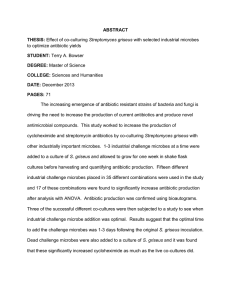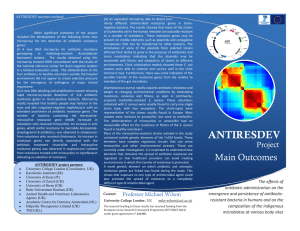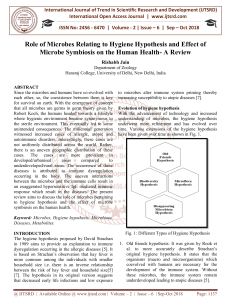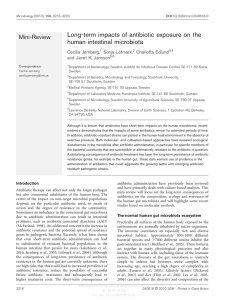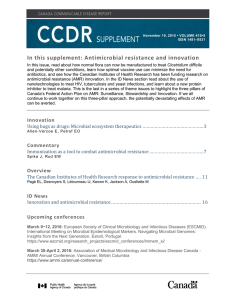20.106J – Systems Microbiology Lecture 24 Prof. Schauer
advertisement
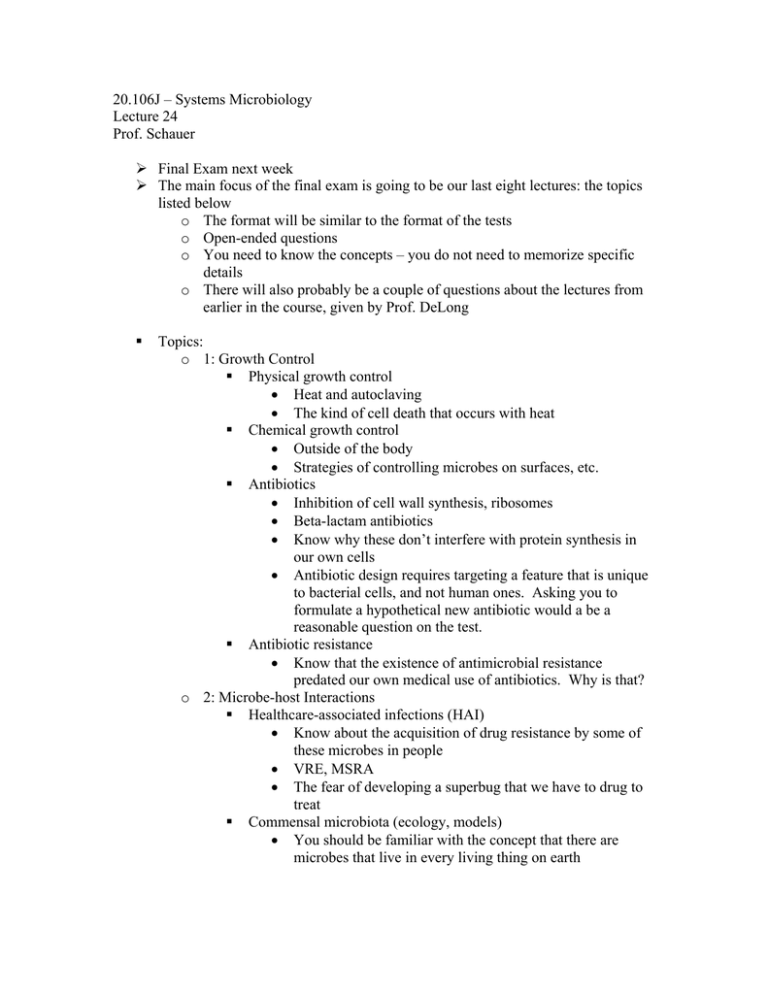
20.106J – Systems Microbiology Lecture 24 Prof. Schauer ¾ Final Exam next week ¾ The main focus of the final exam is going to be our last eight lectures: the topics listed below o The format will be similar to the format of the tests o Open-ended questions o You need to know the concepts – you do not need to memorize specific details o There will also probably be a couple of questions about the lectures from earlier in the course, given by Prof. DeLong Topics: o 1: Growth Control Physical growth control • Heat and autoclaving • The kind of cell death that occurs with heat Chemical growth control • Outside of the body • Strategies of controlling microbes on surfaces, etc. Antibiotics • Inhibition of cell wall synthesis, ribosomes • Beta-lactam antibiotics • Know why these don’t interfere with protein synthesis in our own cells • Antibiotic design requires targeting a feature that is unique to bacterial cells, and not human ones. Asking you to formulate a hypothetical new antibiotic would a be a reasonable question on the test. Antibiotic resistance • Know that the existence of antimicrobial resistance predated our own medical use of antibiotics. Why is that? o 2: Microbe-host Interactions Healthcare-associated infections (HAI) • Know about the acquisition of drug resistance by some of these microbes in people • VRE, MSRA • The fear of developing a superbug that we have to drug to treat Commensal microbiota (ecology, models) • You should be familiar with the concept that there are microbes that live in every living thing on earth • Know about the development of a climax community of microbiota in the human gut as people grow up from infants to adults • Gnotobiotic animals: in the lab, people can create rabbits, mice, or pigs grown in a sterile environment so that they have no microbiota inside them. • You might be able to make some comparisons between our endosymbionts and those of aphids o 3.4: Immunology I and II Immune cells • Be familiar with the main components of the immune system • Know the main components of lymphocytes • Know what B and T cells do once they become activated, what they secrete Inflammation, phagocytosis • Natural immunity • Getting microbes out of the injured site Adaptive immunity (Ag, MHC, T, B) • Know the way that antibodies recognize antigens, as compared to the way that T cells can recognize them • B cells bind to conformational antigens • Affinity maturation o Creates a little extra diversity in a B cell response o However, this does not happen in T cells, because it would be catastrophic to have T cells that recognize different things – you don’t want them to start attacking your own cells. They need to recognize your own MHC Vaccines (types) • Know about the general types of vaccines • You won’t have to name specific vaccines • Understand the range of successful vaccines that have been used • For example, there’s the TB vaccine, which only protects against childhood TB. You can’t give a vaccine like that to immuno-suppressed people – it could kill them • Anergy (tolerance) Hypersensitivity • Type I: IGE • Type IV: TB test is an example o 5: Diagnostic Microbiology Exotoxins: A-B toxins, SAg (Super antigens) • Super antigens bind to the conserved parts of the TCR and the APC o They stimulate large numbers of T cells that share common variable regions of the Beta chain o Whole sale stimulation, release of large quantities of cytokines Selective, differential media • Selective media to inhibit growth of commensals • You can also make differential media, such as adding sugars or pH sensitive dyes MAb, serology o 6: Person-to-person Transmission TB (risk factors, pathogenesis) • Many people get exposed, many people develop latent infections • If they become immuno-suppressed, they can develop active TB Influenza • Antigenic shift o Large, sudden changes • Antigenic drift o Small changes in the proteins compromise the ability of your system to protect you from the virus Hp • Only a small proportion actually develop peptic ulcer disease o 7: Epidemiology Terms • Incidence, prevalence, control, transmission Emerging infectious diseases o 8: Arthropod-borne and Zoonotic Diseases Plague (epidemiology, pathogenesis) • Wild rodents, transmission through fleas on a sporadic basis • Be familiar with how plague affects the flea life cycle, causing it to bite more people • Bubonic, Systemic, and Pneumonic forms of plague





